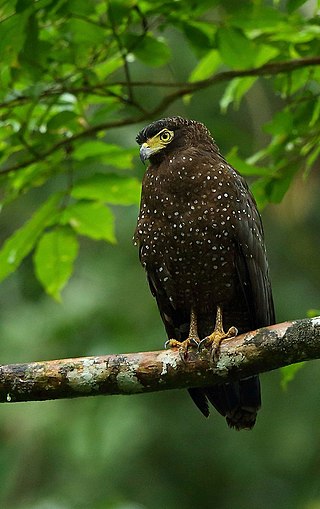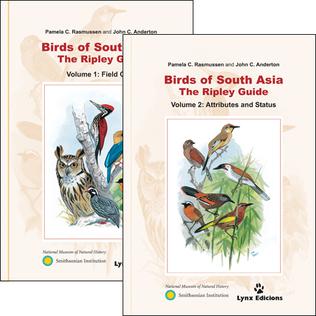
The Andaman Islands are an archipelago in the northeastern Indian Ocean about 130 km (81 mi) southwest off the coasts of Myanmar's Ayeyarwady Region. Together with the Nicobar Islands to their south, the Andamans serve as a maritime boundary between the Bay of Bengal to the west and the Andaman Sea to the east. Most of the islands are part of the Andaman and Nicobar Islands, a Union Territory of India, while the Coco Islands and Preparis Island are part of the Yangon Region of Myanmar.

The Andaman and Nicobar Islands is a union territory of India consisting of 571 islands, of which 37 are inhabited, at the junction of the Bay of Bengal and the Andaman Sea. The territory is about 150 km (93 mi) north of Aceh in Indonesia and separated from Thailand and Myanmar by the Andaman Sea. It comprises two island groups, the Andaman Islands (partly) and the Nicobar Islands, separated by the 150 km wide Ten Degree Channel, with the Andaman islands to the north of this latitude, and the Nicobar islands to the south. The Andaman Sea lies to the east and the Bay of Bengal to the west. The island chains are thought to be a submerged extension of the Arakan Mountains.

The white-breasted waterhen is a waterbird of the rail and crake family, Rallidae, that is widely distributed across South and Southeast Asia. They are dark slaty birds with a clean white face, breast and belly. They are somewhat bolder than most other rails and are often seen stepping slowly with their tail cocked upright in open marshes or even drains near busy roads. They are largely crepuscular in activity and during the breeding season, just after the first rains, make loud and repetitive croaking calls.

The pompadour green pigeon is a pigeon species complex. It is widespread in forests of southern and southeast Asia. Many authorities have split the pompadour green pigeon into multiple species, which are listed below:

The Nicobar Islands rain forests is a tropical moist broadleaf forest ecoregion in the Nicobar Islands. The Nicobar Islands are in the Indian Ocean, lying north of Sumatra and south of the Andaman Islands. The islands are politically part of India, although physically closer to Southeast Asia. Millions of years of isolation from the mainland has given rise to a distinct flora and fauna, including many endemic species.

The Japanese occupation of the Andaman and Nicobar Islands occurred in 1942 during World War II. The Andaman and Nicobar Islands, are a group of islands situated in the Bay of Bengal at about 1,250 km (780 mi) from Kolkata, 1,200 km (750 mi) from Chennai and 190 km (120 mi) from Cape of Nargis in Burma. Until 1938 the British government used them as a penal colony for Indian and African political prisoners, who were mainly put in the notorious Cellular Jail in Port Blair, the biggest town (port) on the islands. Today they form a Union Territory of India.

The Andaman teal is a species of duck endemic to the Andaman archipelago in the Bay of Bengal. The species was formerly considered as a subspecies of the Sunda teal.

The long-tailed parakeet or Burung Bayan Nuri in Malay is a parakeet endemic to the regions of Andaman and Nicobar islands, Sumatra, Borneo and Peninsular Malaysia. It is allopatric with the congener, the Red-breasted parakeet, Psittacula alexandri, except in the Andaman islands where they occur together.

Mount Harriet National Park, officially renamed as Mount Manipur National Park, is a national park located in the Andaman and Nicobar Islands union territory of India. The park, established in 1969, covers about 4.62 km2 (18.00 mi2). Mount Manipur, which is a part of the park, is the third-highest peak in the Andaman and Nicobar archipelago next to Saddle Peak in North Andaman and Mount Thullier in Great Nicobar.

The collared kingfisher is a medium-sized kingfisher belonging to the subfamily Halcyoninae, the tree kingfishers. It is also known as the white-collared kingfisher, black-masked kingfisher or mangrove kingfisher. It has a wide range extending from the Red Sea across southern Asia to Polynesia. A number of subspecies and subspecies groups have been split from this species including the Pacific kingfisher, the islet kingfisher, the Torresian kingfisher, the Mariana kingfisher, and the Melanesian kingfisher.

The edible-nest swiftlet, also known as the white-nest swiftlet, is a small bird of the swift family which is found in Southeast Asia. Its opaque and whitish bird nest is made exclusively of solidified saliva and is the main ingredient of bird's nest soup, a delicacy of Chinese cuisine.

The Andaman Serpent Eagle, also known as the Andaman dark-serpent eagle or the dark serpent eagle, is a medium-sized bird in the family Accipitridae, the raptor family, that is only found in India on the Andaman Islands. It is currently classified as vulnerable and is experiencing population declines. This species, unlike the Crested serpent eagle, is incredibly understudied and so many things about its behaviour and ecology are still widely unknown.

The Andaman coucal or brown coucal is a species of non-parasitic cuckoo found in the Andamans, Coco and Table Islands. It is sometimes treated as a subspecies of the greater coucal. It is found mainly in forested habitats and thickly covered gardens.

The Andaman wood pigeon is a species of bird in the family Columbidae. It is endemic to the Andaman and Nicobar Islands in India. Classified as 'near threatened' by the IUCN, its population is estimated as between 2,500 and 10,000 mature individuals.

The Andaman crake is a bird species in the family Rallidae. It is endemic to the Andaman Islands of the eastern Indian Ocean.

The Andaman woodpecker is a species of bird in the woodpecker family Picidae. It is endemic to the Andaman Islands in India. Its natural habitat is tropical moist lowland forests. It is threatened by habitat loss.

Birds of South Asia: The Ripley Guide by Pamela C. Rasmussen and John C. Anderton is a two-volume ornithological handbook, covering the birds of South Asia, published in 2005 by the Smithsonian Institution and Lynx Edicions. The geographical scope of the book covers India, Bangladesh, Pakistan, Sri Lanka, Nepal, Bhutan, Maldives, the Chagos Archipelago and Afghanistan. In total, 1508 species are covered. Two notable aspects of Birds of South Asia are its distribution evidence-base — the book's authors based their distributional information almost completely on museum specimens — and its taxonomic approach, involving a large number of species-level splits.

The Andaman cuckooshrike is a species of bird in the family Campephagidae. It is endemic to the Andaman Islands. It was formerly considered a subspecies of the bar-bellied cuckooshrike.

The Andaman bulbul is a member of the bulbul family of passerine birds. It is endemic to the Andaman Islands. It has a mainly olive-yellow plumage and has most of the head olive. It feeds on small fruit and berries, but will also take insects.

The Andaman shama is a species of bird in the family Muscicapidae. It is endemic to the Andaman Islands. It was previously considered a subspecies of the white-rumped shama. Its natural habitats are subtropical or tropical dry forests and subtropical or tropical moist lowland forests.





















